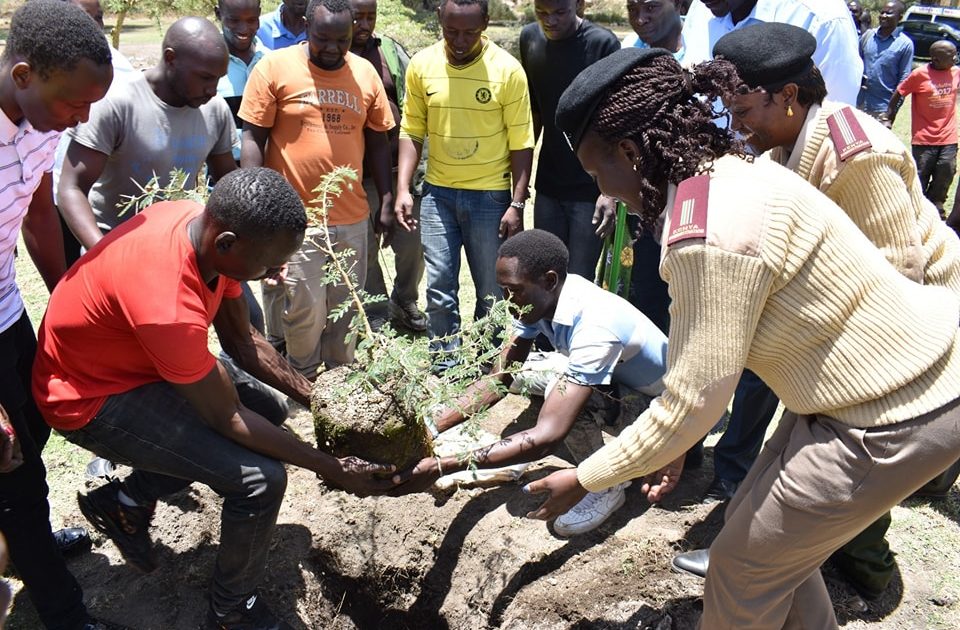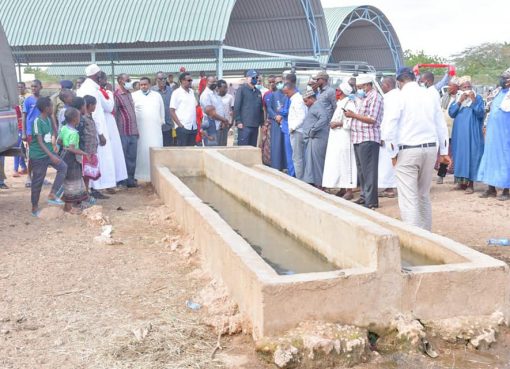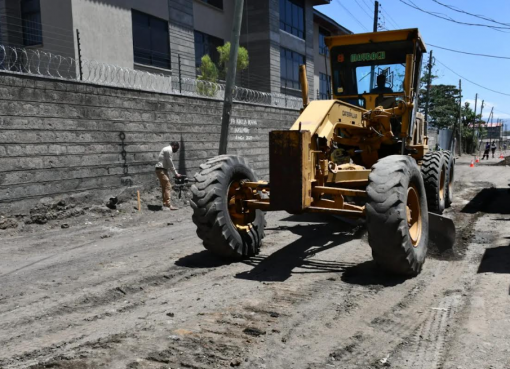The County Government of Nakuru has embarked on a mission to combat carbon dioxide emissions in the country by planting 10 million trees between now and the year 2025.
In a bid to mitigate the negative effects of climate change on the environment, the devolved unit has further announced its commitment to increase the tree cover to more than 15 per cent.
Kenya currently contributes 0.05 per cent of the world’s total carbon emissions with a drop by 13.80 per cent from 19.0 million tonnes in 2019 to 16.4 million tonnes in 2020, according to a study by Knoema Data Experts.
Governor Susan Kihika said her administration was working with various stakeholders to turn around the negative effects of environmental degradation and climate change.
Kihika cited partnerships with the Kenya Forest Service (KFS), Kenya Forestry Research Institute (KEFRI), Kenyatta University, Green Blue Foundation Africa and the County Commissioner’s office, adding that the current 9.2 per cent forest cover in the county was too low.
“The work will include enabling communities to raise tree nurseries and supply seedlings to residents for planting under a programme that will be implemented in all the eleven sub-counties. The communities are encouraged to plant trees with high commercial value that are environmentally friendly,” stated the County boss.
Climate change, she said, has also burdened other sectors, including health and infrastructure, as well as disrupting local and international supply chains.
“To a considerable extent, these adversities are the direct and indirect consequences of human failure to observe its ecological imperative. The solution is to plant trees to reduce greenhouse emissions, to stop and reverse deforestation so that the human race is saved from the climate catastrophe,” added Kihika.
In a speech delivered on her behalf by County Executive Committee Member (CECM) in Charge of Water, Environment, Energy, Natural Resources and Climate Change Dr Nelson Maara during a tree planting exercise at Kamere beach in Naivasha Sub-County, Kihika stated that increasing tree cover in Kenya would help reduce human-wildlife conflicts.
The Governor indicated that millions of wildlife that depend on forest cover for their existence are faced with extinction due to illegal logging and failure to plant trees. “A high number of animals have been killed by communities after straying from the forests, national parks and game reserves for lack of tree cover, food and water,” she said.
“This trend can be reversed with sensitization of the local communities on the need to conserve the environment and protect wildlife, which is a national heritage,” she noted.
The national government wants to have a minimum of 10 per cent forest cover in Kenya by involving various stakeholders. In November last year President Dr. William Ruto launched a tree restoration program at Ngong Hills Forest to kick start his plan of planting 15 billion trees by 2032.
Ruto said the initiative will help combat the effects of climate change, which has unleashed calamities such as droughts, floods, unpredictable rainfall patterns and disease and pest outbreaks.
Nyeri County leads with an estimated 38 per cent tree cover, a record that the Nakuru County administration is confident it will surpass in a couple of years.
According to KFS, Rift Valley has an average forest cover of 14.6 per cent with Elgeyo Marakwet accounting for the highest at 37 per cent, followed by Baringo at 25 per cent, Kericho at 23.5 per cent, Nandi 16.8 per cent, Narok 16.6 per cent and Trans Nzoia at 16.1 per cent.
Others are Samburu at 12.8 per cent, Bomet 12.7 per cent, Nakuru 9.2 per cent, West Pokot 8.3 per cent, Uasin Gishu 7.5 per cent, Kajiado 7.1 per cent, with Laikipia and Turkana trailing at 6.7 per cent and 4.06 per cent respectively.
In his remarks, Maara said women, youths and vulnerable groups will be incorporated into the programme to establish tree nurseries with the support of Community Forest Associations (CFAs) in the ambitious plan to raise tree cover.
“KFS is expected to provide eight million tree seedlings with the county government topping up with two million tree seedlings that will be distributed for planting in farmlands and gazetted forests,” the CECM pointed out.
With the challenges brought by global warming, Maara said, there was an urgent need for counties to join hands with various development partners and donor agencies to formulate sound and practical policies to conserve the environment, increase forest cover, provide clean and safe-to-drink water for the communities and raise the people’s livelihoods.
Maara observed that if every Kenyan plays their part, each would only have to plant 30 trees per year, or 300 in 10 years. He stated that the devolved unit was fast-tracking development and implementation of spatial plans so as to guide environmental conservation and food security and create job opportunities.
Nakuru County Forest Ecosystem Conservator Mr. Peter Mukira asked administrators of learning institutions to take a leading role in environmental conservation programmes and inculcate in local communities the culture of protecting natural resources.
Mukira observed that County governments play a leading role in efforts to increase the on-farm tree cover across the country. He urged land owners to set aside 10 per cent of their farms for tree planting.
He said KFS was committed to take charge of efforts to raise tree cover by involving all government institutions, private citizens, donor organizations, private sector players and other stakeholders.
By Anne Mwale





